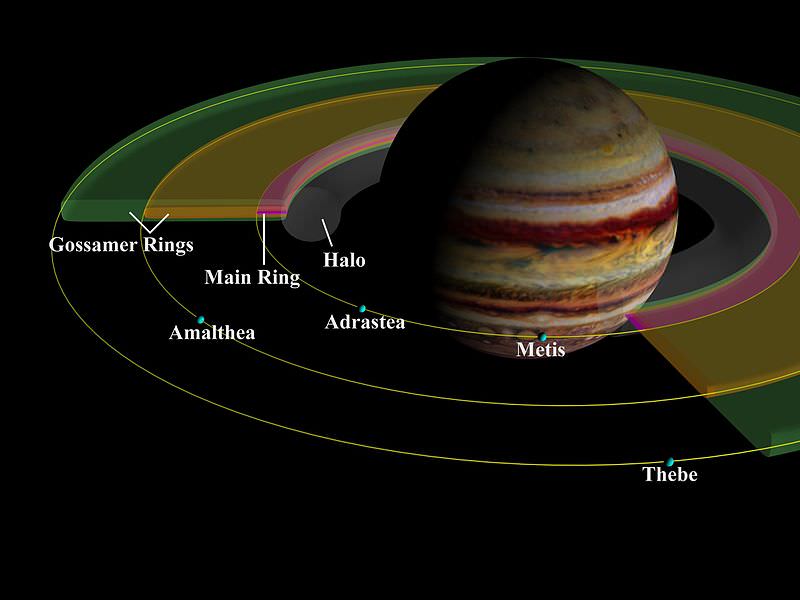Robotic spacecraft can gather a lot of data, and sometimes it takes years to sort through all the information acquired. Case in point: The Galileo spacecraft orbited Jupiter from 1995-2003. One discovery made by this mission was an anomaly in Jupiter’s rings. For the most part, the rings fall into the standard model of ring formation where the ring particles are shepherded by the orbits of four of Jupiter’s moons; Adrastea, Metis, Amalthea and Thebe (closest to farthest.) But a faint outward protrusion of dust extends beyond the orbit of Thebe, and scientists were mystified why this was occurring.
But a new study of data from the Galileo mission has found that this extension results from the interplay of shadow and sunlight on dust particles that make up the rings.
"It turns out that the outer ring's extended boundary and other oddities in Jupiter's rings really are 'made in the shade,'" said Douglas Hamilton, a professor of astronomy at the University of Maryland. "As they orbit about the planet, dust grains in the rings alternately discharge and charge when they pass through the planet's shadow. These systematic variations in dust particle electric charges interact with the planet's powerful magnetic field. As a result small dust particles are pushed beyond the expected ring outer boundary, and very small grains even change their inclination, or orbital orientation, to the planet."
The Galileo spacecraft was deliberately maneuvered to plunge into Jupiter in 2003 in an effort to protect one of its own discoveries - a possible ocean beneath the icy crust of the moon Europa (scientists didn’t want the spacecraft to one day impact and possibly contaminate Europa.) During this maneuver, the spacecraft dove through the rings and registered thousands of impacts from dust particles with its supersensitive dust detector.
Hamilton and German co-author Harald Krüger studied the impact data on dust grain sizes, speeds, and orbital orientations. Krüger analyzed the new data set and Hamilton created elaborate computer models that matched dust and imaging data on Jupiter's rings and explained the observed unexpected behavior.
Take a look at Hamilton’s incredible models
here.
"Within our model we can explain all essential structures of the dust ring we observed, " said Krüger.
According to Hamilton, the mechanisms they identified affect the rings of any planet in any solar system, but the effects may not be as evident as it is at Jupiter. "The icy particles in Saturn's famous rings are too large and heavy to be significantly shaped by this process, which is why similar anomalies are not seen there, " he said. "Our findings on the effects of shadow may also shed some light on aspects of planetary formation because electrically charged dust particles must somehow combine into larger bodies from which planets and moons are ultimately formed."
Original News Source: University of Maryland press release
 Universe Today
Universe Today
